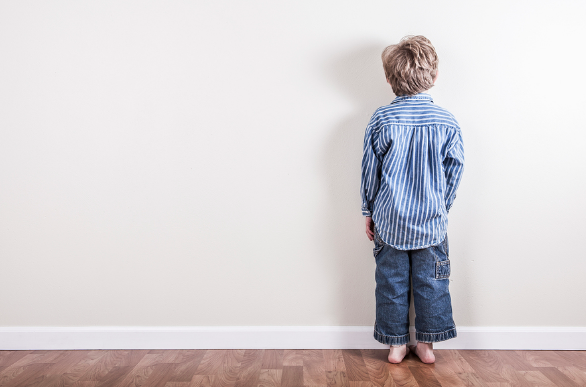Time-outs were originally designed in order to help a child reflect on his or her behavior in an effort to change his or her behavior. However, in recent years, brain imagining has shown that relational pain-like that caused by isolation during punishment, can look the same as the experience of physical abuse. In other words, the experience of a time-out can often have more negative implications than positive implications on a growing child and his brain. Below please find three reasons why you should avoid giving time-outs as well as the reasoning behind introducing “time-ins”.
1. Time outs may trigger a child’s fear of abandonment as he is separated from his parent during the time that he needs his parent the most
2. Time outs don’t help kids learn to regulate their emotions
3. Time outs don’t help kids learn how to work through their emotions and deal with the cause of problematic behavior
Time outs may trigger a child’s fear of abandonment as he is separated from his parent during the time that he needs his parent the most
Sending a child on a time out may be experienced by your young child as an act of pushing her away during a time when she may need you the most. A time out sends a message to a child that not all parts of her are loveable. When a parent isolates a child during a time out repeatedly he may actually be sending a message to his child that she is unwanted or not entirely accepted thus causing relational wounds for the child and triggering feelings of abandonment. This can lead to relational problems as an adolescent or adult.
Time outs don’t help kids learn to regulate their emotions
The best way to calm a child is by creating a comforting “holding environment” for her, giving her the message that all parts of her are acceptable and can be tolerated and teaching her what she can do differently next time once she is calm. A timeout however, sends the opposite message. A holding environment, which can be in the form of staying with your child during their intense feelings, will better teach your child that their feelings are okay. On a time out if a child is isolated than they don’t learn the tools to self-regulate or self-soothe as nobody is teaching them how to do so. With a “time-in”, the parent is there to teach. Remember the word discipline means “to teach”.
Time outs don’t help kids learn how to work through their emotions and deal with the cause of problematic behavior
A time out sends the message to a child that only her pleasant expressions/feelings are safe. So, a child may conclude that her challenging feelings are unlovable. With this message a child may learn to repress messy or ugly feelings which is not healthy and causes problems later in life.
What to do Instead
3 Reasons the experts advise against time-outs and why having a “time-in” is a positive new alternative.
When you see warning signs for an oncoming meltdown take your child on a “time in”. “Time ins” let your child know that you are here for her and can tolerate her big feelings. A time in can be in the form of cuddling with your child, teaching your child calming breathing exercises or reading a book with your child. The point is just letting your child know that you are there for her and that she is safe with you and her feelings-and you will help her to manage them. Then you will teach her how to do this for herself.


Recent Comments